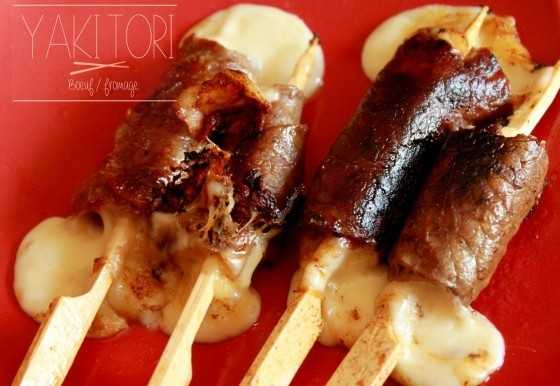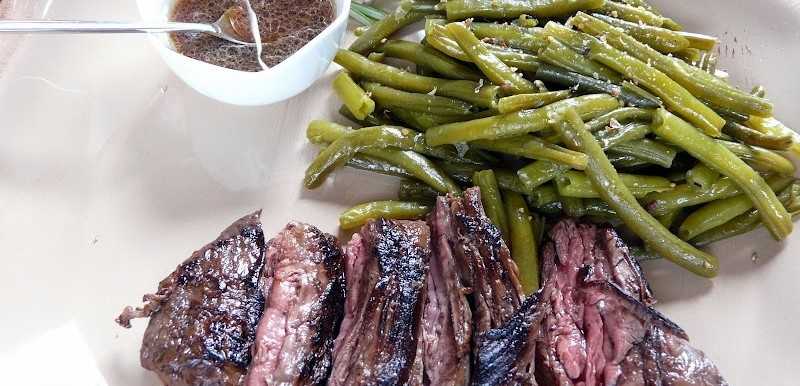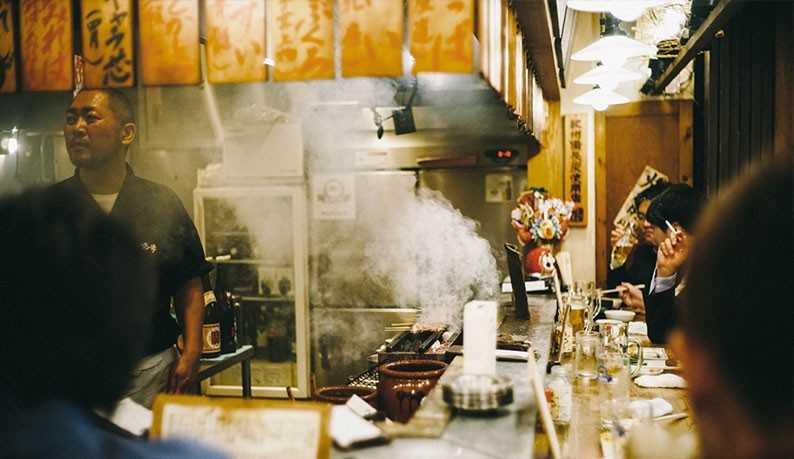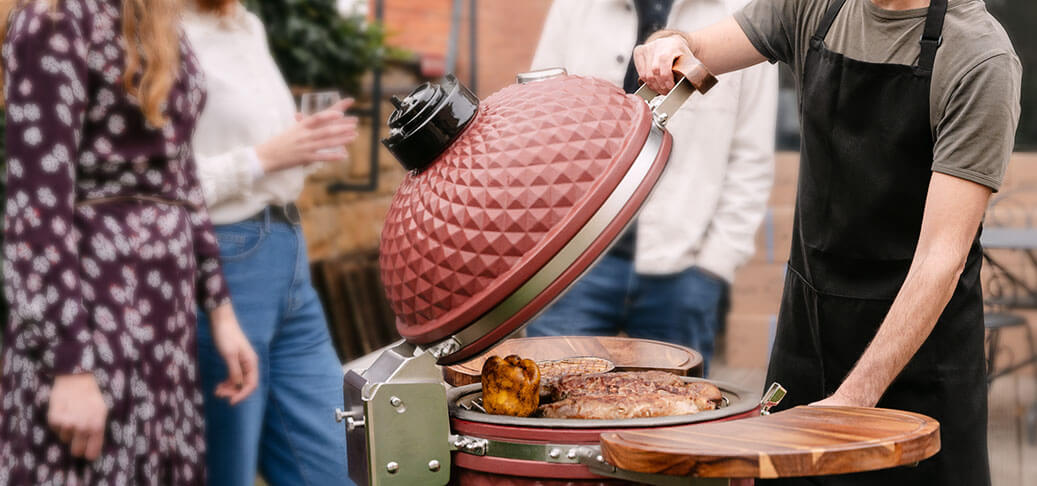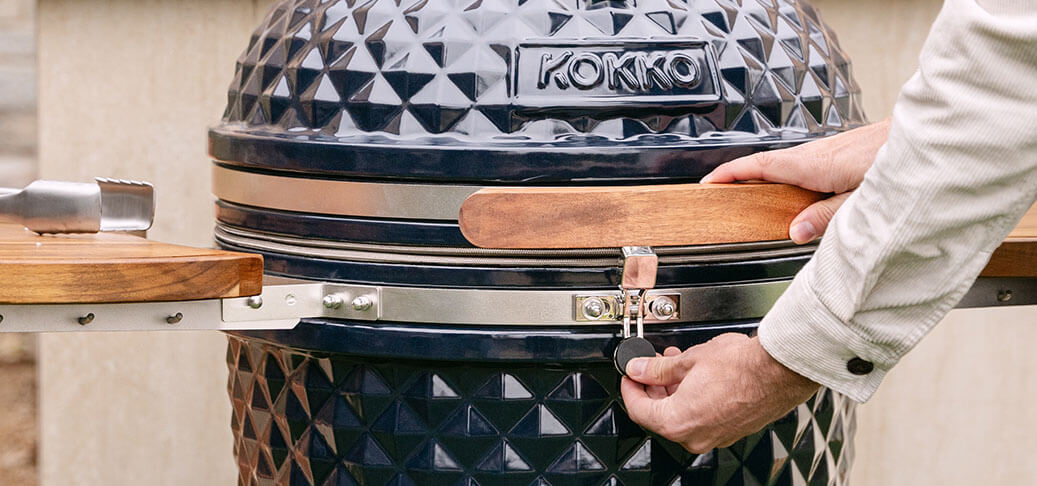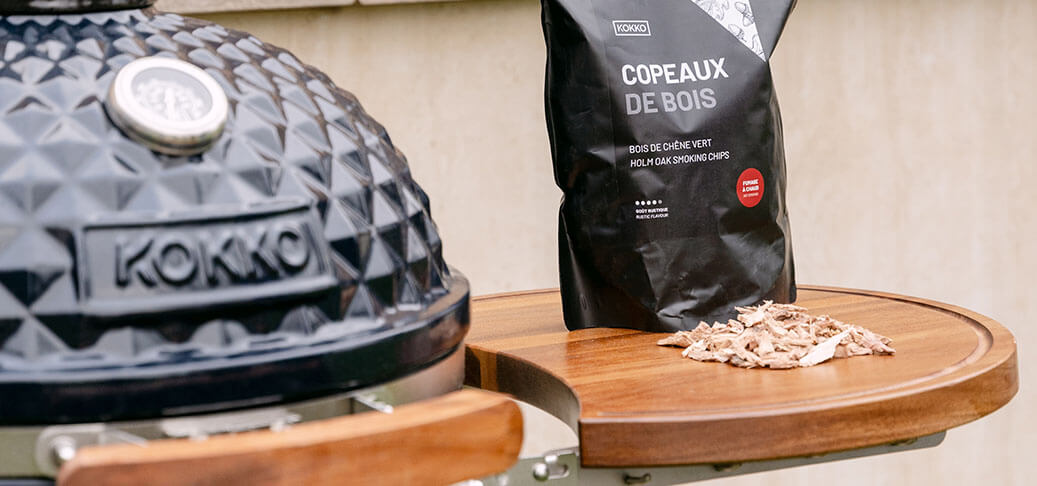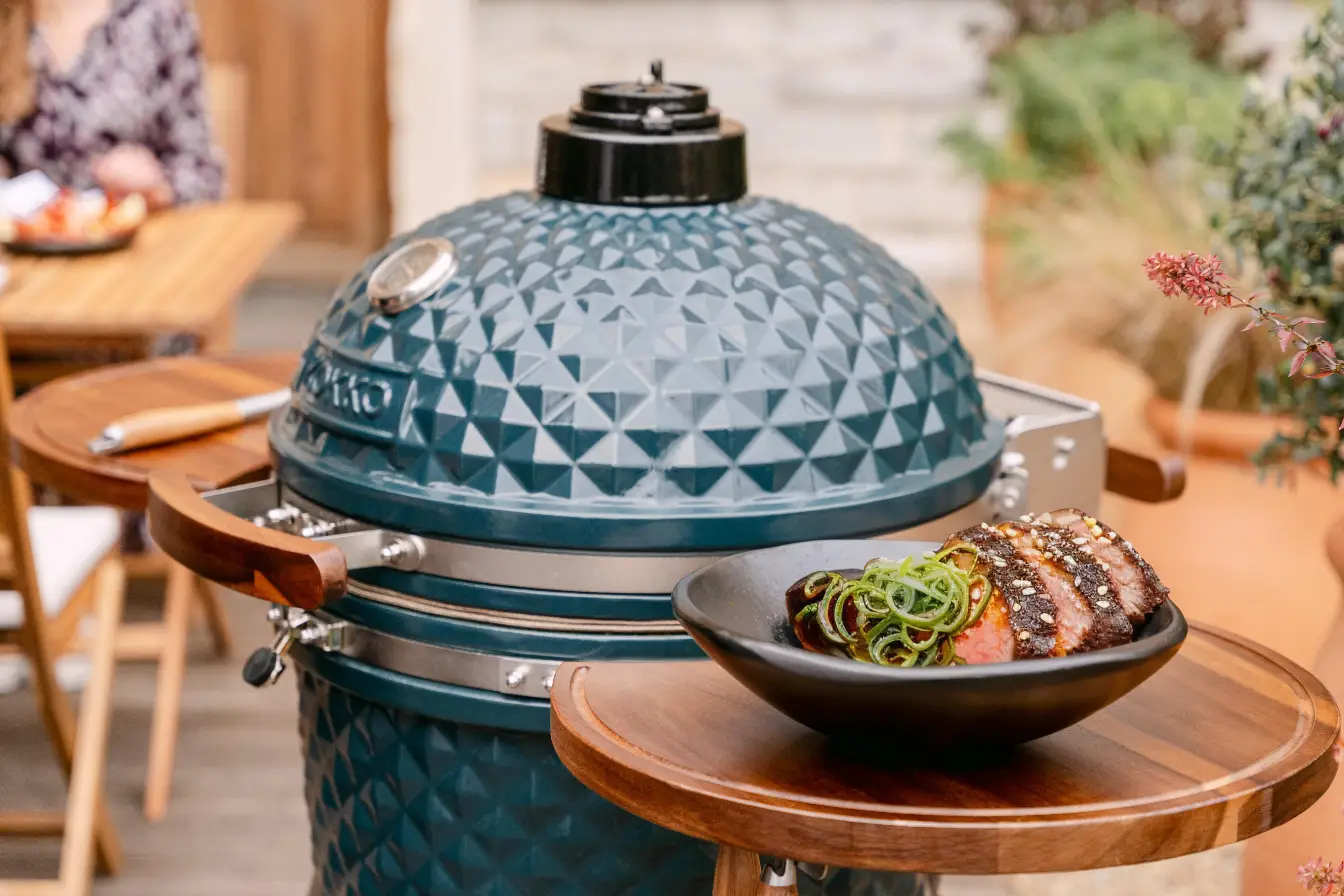
In fact, the recipe for beef tataki is ideally suited to outdoor cooking, particularly on a kokko kamado barbecue, which provides the ideal temperatures for searing the meat perfectly. The accompaniment to beef tataki also plays an essential role in the taste experience, as does the choice of a good, tender, quality beef tenderloin tataki. In this article, discover how to marry Japanese elegance with barbecue conviviality to create a dish that's sure to impress your guests.
Table of contents [hide]
Rediscover the barbecue version of beef tataki
Beef tataki has its origins in the Japanese province of Tosa, where it was developed by the samurai Sakamoto Ryoma in the 19th century. Traditionally prepared with fish, notably bonito, this method of preparation has been perfectly adapted to beef and, more recently, to barbecuing.
Why this recipe is perfect for the barbecue
The preparation of tataki requires a very high temperature to quickly sear the meat while preserving a melting, raw center. This is precisely what is possible with the barbecue, in particular the kokko kamado, which can reach temperatures ideal for this technique.
In the Japanese tradition, tataki was prepared over a straw fire that produced an intense, brief flame. Barbecuing perfectly reproduces these conditions, with a few added advantages:
- Barbecue heat is constant and controllable, unlike a straw fire
- Closed lid concentrates heat and flavours around meat
- The grill leaves characteristic marks that add a visual dimension to the dish.
For a successful barbecued beef tenderloin tataki, simply preheat the grill to around 250°C, then sear the meat directly on the grill for 2 minutes on each side. This rapid cooking process produces a beautiful coloration on the outside, while keeping the inside rare.
A balance between Japanese tradition and open-air conviviality
Tataki perfectly embodies the meeting of two culinary worlds: Japanese precision and refinement on the one hand, and the conviviality of the barbecue on the other.
This cooking method, once used by Japanese sailors to preserve their catch at sea, has evolved over time into a refined preparation. Today, it's inviting us into our gardens, creating a bridge between cultures.
The recipe for beef tataki is usually accompanied by a soy, ginger and citrus-based sauce, which blends perfectly with the smoky notes of the barbecue. Theaccompaniment to beef tataki can vary, but often includes a crisp salad such as minced Chinese cabbage, julienned carrots or fresh mizuna leaves.
To complete the experience, serve your tataki with a light sake, a low-tannin red wine such as Pinot Noir, or, for a non-alcoholic option, a Japanese green tea such as Sencha or Genmaicha. These beverages will enhance the dish's delicate flavors while preserving the freshness needed for a summery outdoor meal.
Ingredients for 4 people
To prepare the perfect barbecued beef tataki, the choice of ingredients is essential. Here's everything you'll need to delight four guests with this delicious Japanese recipe suitable for outdoor cooking.
Beef tenderloin tataki: which cut to choose?
Beef tenderloin is the ideal cut for successful tataki. Its natural tenderness and melt-in-the-mouth texture make it the perfect candidate for this quick cooking method. In terms of quantity, allow 100 g of beef per person for a starter, 150 g for a main course, and up to 200 g for more generous appetites. For 4 people, allow around 500 g of quality beef fillet. If possible, opt for exceptional meats such as Wagyu or Angus, which are particularly well-suited to this recipe.
Alternatives: Rump steak or inside round are also good choices, as long as you select tender cuts with little tenderness. Cut the meat into parallelepipeds weighing around 80 g each, for even cooking on your kokko kamado.
Marinade: soy sauce, ginger, garlic, honey

For a tasty marinade that will sublimate your meat, mix :
- 3 tablespoons soy sauce (prefer the sweet version)
- 1 teaspoon grated fresh ginger (or 1/2 teaspoon powder)
- 2 garlic cloves, finely chopped
- 1 tablespoon honey to lightly caramelize the meat
- 1 teaspoonsesame oil for subtle fragrance
- A few turns of freshly ground black pepper
Some more elaborate versions add mirin (sweet rice wine), sake or rice vinegar for a tangy touch.
Coating: sesame seeds, pepper, fresh herbs

After cooking, your tataki can be coated with an aromatic mixture composed of :
-
1 teaspoon white sesame seeds
-
1 teaspoon black sesame (for visual and taste contrast)
-
Pepper (timut offers interesting citrus notes)
-
Finely chopped fresh herbs (coriander, parsley, mint)
Accompaniments: crisp salad, vinegared rice, grilled vegetables
Complete your tataki with :
-
-
A crunchy salad: combine finely sliced Chinese cabbage, julienned carrots and crushed peanuts, seasoned with olive oil, lime juice and a drizzle of cane syrup.
-
Japanese-style vinegared rice
-
Grill vegetables directly on your barbecue
-
Mix soy sauce, rice vinegar, lime zest and ginger to make a sauce to accompany the tataki slices before serving.
Preparation steps for successful barbecued tataki
Barbecuing beef tataki follows a precise process that guarantees perfect texture and balanced flavors. Here are the essential steps for successfully preparing this Japanese delicacy in your own backyard.
1. Prepare marinade and dip meat in it
In a bowl, combine the sesame oil, soy sauce, honey, grated ginger and minced garlic. Add a few turns of freshly ground black pepper. Place the beef fillet in a shallow dish and pour the marinade over it. For best flavor penetration, lightly pierce the surface with a fork.
2. Marinate in a cool place for 1 to 2 hours
Cover with cling film and refrigerate for at least 1-2 hours. For stronger flavors, you can marinate overnight. Take the meat out about 30 minutes before cooking to bring it back to room temperature.
3. Remove meat and sear on barbecue
Preheat your kokko kamado to 250°C. This high temperature is ideal for quickly searing the exterior while preserving the raw interior. Brush the grill and place the meat directly on top. Cook for 2 minutes on each side, keeping the lid closed as much as possible.
4. Cool meat in an ice bath
This traditional step is essential: immediately after cooking, plunge the beef into a bowl of iced water for one minute. This thermal shock instantly stops the cooking process and creates the characteristic contrast between the caramelized exterior and the tender interior.
5. Slice thinly and arrange on plate
Pat the meat dry with paper towels. Using a sharp knife, slice the tataki into thin strips about 0.5 cm thick. Arrange these slices harmoniously on a bed of fresh greens, such as mizuna or arugula.
6. Top with hot sauce and sprinkle with sesame seeds.
While the meat is resting, lightly heat the reserved marinade in a saucepan. Coat the slices of meat with the hot sauce, then sprinkle generously with toasted sesame seeds for a crunchy, fragrant touch.
Tips and ideas to enhance your tataki

Once you've mastered the basic tataki technique, there are a number of tricks you can use to take this Japanese preparation to the next level. Your kokko kamado will be your best ally in impressing your guests.
Dressing ideas to impress your guests
For an elegant presentation, arrange the slices of beef tataki in a rosette on a black plate. Add a few touches of yuzu kosho for a tangy, lemony note. Sprinkle with black and white sesame seeds for a striking visual contrast. Finally, a few fresh sprouts or mizuna leaves will add height to your presentation.
Cold drinks to serve with tataki
Beef tenderloin tataki pairs perfectly with a light sake that won't mask its delicate flavors. For wine lovers, a Pinot Noir with little tannin complements this dish harmoniously. If you prefer a non-alcoholic option, opt for a Japanese green tea such as Sencha or Genmaicha, whose herbal notes will sublimate the meat.
Recipe variations: yuzu kosho, ponzu sauce, chimichurri
Serve beef tataki with a variety of sauces:
-
-
Ponzu sauce, a refreshing blend of soy sauce, lemon juice and dashi
-
Yuzu kosho, a Japanese chilli and citrus condiment
-
The more daring chimichurri sauce, a blend of parsley, coriander, mint, garlic and chilli pepper
-
How to adapt the recipe for vegetarians
The recipe for beef tataki is easily transposed to a vegetarian version. Replace the meat with eggplant sliced into thick medallions, marinated firm tofu or portobello mushrooms. The barbecue technique and seasoning remain the same, offering a similar taste experience without the meat.
Conclusion
Barbecued beef tataki is much more than just a recipe. It's the perfect blend of Japanese culinary finesse and Western barbecue conviviality. Thanks to the kokko kamado, this fusion is not only possible, but exceptional. In fact, the intense, even heat of this type of barbecue enables the meat to be seared quickly, while preserving a tender, flavourful heart, just as Japanese tradition dictates.
The secret of a successful tataki certainly lies in the balance of temperatures and flavors. On the one hand, the flash-cooking followed by the ice bath creates that characteristic contrast between the caramelized exterior and the melting interior. On the other hand, the umami marinade, enhanced by the smoky notes of the barbecue, offers a unique aromatic complexity.
FAQs
Q1. What's the best cut of beef for barbecued tataki? Beef tenderloin is the ideal choice for barbecued tataki. Its natural tenderness and melt-in-the-mouth texture make it the perfect cut for quick cooking while preserving a tender, flavourful heart.
Q2. How do you cook tataki successfully on the barbecue? To cook tataki successfully on the barbecue, preheat your grill to 250°C, sear the meat for 2 minutes on each side, then plunge it immediately into an ice-water bath to stop the cooking process. This technique produces a caramelized exterior and a tender interior.
Q3. Is beef tataki eaten hot or cold? Beef tataki is usually eaten cold or at room temperature. After quick cooking and cooling, it's sliced thinly and served with an accompanying sauce, making it a refreshing dish perfect for summer.
Q4. What are the traditional accompaniments to beef tataki? Traditional accompaniments to beef tataki include a crisp salad (such as shredded Chinese cabbage or julienned carrots), Japanese-style vinegared rice, and a soy-based sauce. Barbecued vegetables can also complete the dish.
Q5. How can the tataki recipe be adapted for vegetarians? For a vegetarian version of tataki, replace the beef with thickly sliced eggplant, marinated firm tofu or portobello mushrooms. The barbecuing technique and seasoning remain similar, offering a comparable taste experience without meat.





